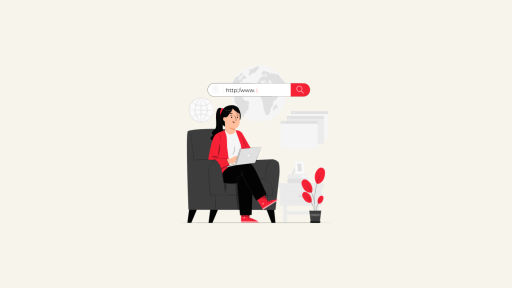
In the ever-evolving landscape of workplace culture and employee well-being, companies are constantly innovating their benefits packages to attract and retain top talent. While certain perks are intended to enhance the overall employee experience, there exists a realm of surprising benefits that workers might secretly despise. In this insightful exploration, we delve into the unexpected side of employee benefits, uncovering those seemingly generous offerings that, rather surprisingly, fail to resonate with the workforce. From well-intentioned initiatives to perks that miss the mark, this article sheds light on the lesser-known aspects of employee benefits that may not be as appreciated as employers believe.
As we navigate through the various benefits that workers may secretly despise, it becomes crucial to understand the underlying dynamics. The quest for an ideal workplace goes beyond a mere checklist of perks, necessitating a deep dive into employee preferences, individual needs, and the evolving expectations within a diverse workforce. By examining each benefit from the employees’ perspective, we aim to provide valuable insights for employers looking to refine their benefits packages and create a workplace that truly resonates with their workforce.
Open Office Spaces
Modern workplace design has witnessed a significant shift in recent years, with open office spaces gaining popularity due to their perceived benefits in fostering collaboration and communication. However, this shift has not been without its challenges. In this exploration, we delve into the world of open office spaces, examining both the advantages and disadvantages to shed light on the nuances of this workplace trend.
Pros of Open Office Spaces:
Proponents of open office spaces argue that the layout promotes teamwork, encourages spontaneous interactions, and breaks down traditional hierarchical barriers. The seamless flow of ideas and the potential for increased camaraderie among team members are often cited as primary advantages. Additionally, the cost-effectiveness of utilizing space efficiently appeals to many organizations.
Cons of Open Office Spaces:
Despite the optimistic outlook, the drawbacks of open offices cannot be ignored. The lack of privacy, constant noise, and disruptions can hinder concentration and productivity. Employees may find it challenging to focus on individual tasks, leading to increased stress and frustration. Striking a balance between collaboration and the need for personal space emerges as a critical challenge in implementing open office designs.
Case Studies and Employee Feedback:
Examining real-world examples and employee feedback provides valuable insights into the varied experiences within open office environments. Case studies of organizations that have successfully navigated the challenges and implemented effective strategies shed light on best practices. Simultaneously, understanding the grievances expressed by employees working in open offices offers a glimpse into the potential pitfalls and areas for improvement.
Navigating the Challenges:
Organizations can consider implementing measures such as designated quiet zones, flexible seating arrangements, and noise-canceling technologies to address the challenges associated with open office spaces. Employee feedback loops and regular assessments can aid in fine-tuning the office layout to meet the evolving needs of the workforce. Recognizing that a one-size-fits-all approach may not be suitable, customization becomes key in optimizing the benefits of open office designs.
Open office spaces represent a dynamic paradigm in the ever-evolving landscape of workplace design. While they offer advantages in fostering collaboration and optimizing space utilization, the potential drawbacks require careful consideration. Striking the right balance involves acknowledging the diverse needs of employees, implementing thoughtful design modifications, and fostering a culture that values collaboration and individual focus. Through continuous adaptation and a nuanced approach, organizations can navigate the challenges of open office spaces to create a work environment that truly enhances productivity and employee satisfaction.

Wellness Programs with Mandatory Participation
Employee wellness programs have become a staple in workplaces aiming to prioritize the health and well-being of their workforce. While the intention behind such programs is commendable, the issue arises when participation becomes mandatory. In this exploration, we delve into the nuances of wellness programs with mandatory participation, examining both the potential benefits and the concerns they may raise among employees.
Benefits of Wellness Programs:
Employee wellness programs are designed to promote a healthier and more engaged workforce. They often include initiatives such as fitness challenges, nutritional guidance, mental health resources, and preventive health screenings. When voluntarily embraced, these programs have the potential to improve overall employee well-being, reduce healthcare costs, and boost morale.
Concerns Surrounding Mandatory Participation:
While wellness programs’ goals are positive, enforcing mandatory participation can have unintended consequences. Employees may feel pressured to share personal health information, participate in activities that may not align with their preferences, or even face potential privacy concerns. The obligation to engage in wellness initiatives can, paradoxically, contribute to stress rather than alleviate it.
Employee Perspectives and Feedback:
Understanding employees’ perspectives through surveys, feedback sessions, and anonymous communication channels provides valuable insights into how wellness programs are perceived. Exploring real-life experiences and employee concerns sheds light on the potential pitfalls of mandatory participation and the need for a more flexible and accommodating approach.
Striking a Balance:
To create a successful wellness program, employers must strive to balance encouraging participation and respecting individual choices. Offering various wellness options, ensuring privacy in health-related matters, and providing flexibility in participation can help employees feel more empowered and engaged in their well-being journey.
Wellness programs foster a healthier and happier workforce. However, mandatory participation introduces complexities that can hinder the intended positive outcomes. Employers must carefully navigate this fine line, recognizing their workforce’s diverse needs and preferences. By fostering a culture of voluntary engagement, respecting privacy, and continuously adapting wellness initiatives based on employee feedback, organizations can create a more inclusive and effective approach to employee well-being. Ultimately, the goal is a healthier workforce that feels supported, valued, and in control of their wellness journey.

“Fun” Team-Building Activities
Team-building activities are a common strategy employed by organizations to strengthen bonds among employees, enhance collaboration, and foster a positive work environment. However, employees’ perceptions of “fun” team-building activities can vary widely. In this exploration, we delve into the complexities of team-building initiatives, examining the potential benefits and the challenges that may arise when such activities are mandated as “fun.”
Benefits of Team-Building Activities:
The underlying premise of team-building activities is to create a cohesive and motivated workforce. When executed thoughtfully, these activities can break down communication barriers, build trust among team members, and contribute to a more positive and collaborative workplace culture. The shared experiences can lead to improved teamwork and better understanding among colleagues.
Challenges of Mandated “Fun” Activities:
Despite the positive intent, team-building activities labeled as “fun” may not resonate universally. Employees may have diverse preferences and comfort levels, and mandatory participation in activities perceived as forced or uncomfortable can lead to resistance. Striking the right balance between encouraging team-building and respecting individual boundaries becomes crucial.
Employee Perspectives and Feedback:
Exploring employee perspectives through surveys and open forums allows organizations to gain insights into the varying opinions and preferences regarding team-building activities. Understanding the experiences and concerns voiced by employees can guide organizations in tailoring these initiatives to be more inclusive and enjoyable for all.
Customizing Team Building:
Organizations should consider a more customized and flexible approach to maximize the benefits of team-building activities. Offering a variety of activities and allowing employees to choose those that align with their interests can enhance engagement and make the experience more enjoyable. Tailoring activities to accommodate different personality types and preferences contributes to a more inclusive and effective team-building strategy.
Team-building activities hold significant potential in shaping a positive workplace culture, but the approach must be thoughtful and considerate. Mandated “fun” activities may inadvertently lead to discomfort and resistance, highlighting the need for customization and flexibility. By recognizing and respecting the diverse preferences of employees, organizations can create team-building initiatives that genuinely foster camaraderie, trust, and collaboration. Ultimately, the goal is not just to engage in activities labeled as “fun” but to build lasting connections and strengthen the bonds that contribute to a thriving and cohesive work environment.

Work-From-Home Surveillance Tools
The advent of remote work has brought about a surge in the use of technology to monitor employees’ productivity and engagement. While work-from-home surveillance tools often aim to ensure accountability and maintain productivity, using such tools raises significant concerns about privacy and employee autonomy. In this exploration, we explore the complexities surrounding using surveillance tools in remote work settings, examining the potential benefits and the ethical dilemmas they present.
Benefits and Intentions of Surveillance Tools:
Work-from-home surveillance tools encompass a range of technologies, including screen monitoring, keystroke tracking, and time-tracking software. Employers may argue that these tools are essential for maintaining productivity standards, ensuring that employees are actively engaged during work hours, and identifying areas for improvement. The intention is often to replicate the accountability mechanisms present in traditional office settings.
Privacy Concerns and Employee Autonomy:
Despite the purported benefits, using surveillance tools has sparked concerns about privacy invasion and the erosion of employee autonomy. Employees may feel uncomfortable with constantly monitoring their digital activities, and the blurred line between professional and personal space can create stress and anxiety. Striking a balance between accountability and respecting employees’ privacy becomes crucial.
Employee Perspectives and Legal Implications:
Understanding employees’ perspectives and exploring the legal implications of surveillance tools is paramount. Employee feedback, surveys, and open communication channels provide insights into surveillance’s emotional and practical impacts on remote workers. Additionally, staying informed about privacy laws and regulations ensures that organizations navigate this landscape ethically and legally.
Finding a Middle Ground:
Organizations must adopt a transparent and collaborative approach to address the concerns associated with work-from-home surveillance tools. Communicating the purpose and scope of surveillance, obtaining informed consent, and allowing employees some degree of control over monitoring settings can contribute to a more ethical and respectful use of these tools.
Using work-from-home surveillance tools presents a delicate balance between maintaining productivity standards and respecting employee privacy. Organizations must navigate this terrain thoughtfully, considering the ethical implications and legal boundaries. By fostering open communication, obtaining informed consent, and establishing clear guidelines, employers can ensure that surveillance tools, if used, contribute to a positive remote work environment without compromising the trust and autonomy of their workforce. Ultimately, the goal is to strike a harmonious balance that upholds both productivity expectations and the fundamental rights of employees in the evolving landscape of remote work.

Unlimited Snacks and Refreshments
To foster a positive and engaging workplace culture, many organizations have embraced the idea of offering unlimited snacks and refreshments to their employees. This perk intends to create a comfortable and inviting work environment. However, the implications of unlimited snacks extend beyond the surface, potentially impacting employee well-being, dietary choices, and the overall office atmosphere. In this exploration, we delve into the dynamics of providing unlimited snacks and refreshments in the workplace, examining the perceived benefits and the unexpected challenges associated with this seemingly enticing offering.
The Appealing Facade of Unlimited Snacks:
Unlimited snacks and refreshments have become synonymous with a modern and employee-centric workplace. The availability of a wide range of snacks, from healthy options to indulgent treats, aims to cater to diverse tastes and preferences. This perk is often positioned as a gesture of care and an effort to enhance the overall employee experience.
Unintended Consequences on Health and Choices:
While the intent is positive, the abundance of snacks in the workplace can lead to unintended consequences. Employees may succumb to unhealthy eating habits, particularly if the snack options lean towards sugary or processed choices. The pressure to partake in communal snacking may create discomfort for those who prefer more mindful dietary choices, highlighting the need for balance in the types of snacks provided.
The Impact on Workplace Culture:
The presence of unlimited snacks can also influence the broader office culture. It may inadvertently contribute to a sedentary lifestyle and impact employee health. Additionally, the expectation to participate in communal snacking activities can create a dynamic that some employees may find challenging to navigate, potentially affecting team dynamics and individual well-being.
Striking a Balance and Encouraging Choice:
To optimize the benefits of unlimited snacks while mitigating potential drawbacks, organizations should consider striking a balance and encouraging choice. Offering a diverse range of snacks, including healthy options and accommodating dietary restrictions, empowers employees to make choices aligned with their well-being. Clear communication about the availability of snacks and respecting individual preferences contributes to a more inclusive workplace culture.
While well-intentioned, providing unlimited snacks and refreshments introduces complexities that extend beyond the surface-level appeal. Organizations must carefully navigate this perk, recognizing the potential impacts on employee health, choices, and workplace culture. By fostering a culture that encourages balance, choice, and open communication, employers can ensure that the provision of snacks aligns to create a positive and supportive work environment. Ultimately, the key lies in offering a perk that enhances employee well-being without inadvertently compromising their health or creating an environment where choices feel obligatory rather than empowering.

Company-sponsored Social Event
Company-sponsored social events have fostered camaraderie, team building, and a positive workplace culture. These events aim to break down professional barriers, promote social interactions, and contribute to a more cohesive and engaged workforce. However, the success of such initiatives hinges on striking the right balance between creating a lively social environment and respecting employees’ diverse preferences and boundaries. In this exploration, we delve into the dynamics of company-sponsored social events, examining the potential benefits and the challenges that may arise when socializing extends beyond the office setting.
The Intent Behind Company-Sponsored Social Events:
Company-sponsored social events create opportunities for employees to connect personally, fostering stronger relationships and a sense of community. These events, from holiday parties to team-building outings, contribute to a more vibrant and inclusive workplace culture. The intention is often to build a positive work environment that transcends the confines of daily tasks.
Challenges in Mandatory Participation:
While the goal is to enhance workplace relationships, the mandate for participation can present challenges. Introverted individuals or those with personal commitments may find themselves uncomfortable in social settings outside of work hours. The imposition of mandatory attendance can create a sense of obligation rather than fostering genuine connections, underscoring the importance of flexibility in participation.
Balancing Inclusivity and Individual Comfort:
The success of company-sponsored social events lies in striking a delicate balance between fostering inclusivity and respecting individual comfort levels. Offering a variety of events that cater to different preferences and providing flexibility in attendance ensures that employees can engage in social activities that align with their personalities and interests.
Fostering Inclusive Social Cultures:
Organizations must actively foster inclusive social cultures to maximize the benefits of company-sponsored social events. Creating an environment where introverted and extroverted employees feel comfortable contributes to a diverse and supportive workplace. Additionally, seeking feedback and continuously adapting social initiatives based on employee preferences enhance these events’ effectiveness.
Company-sponsored social events are pivotal in shaping workplace dynamics and fostering a positive organizational culture. However, these initiatives’ success hinges on understanding employees’ diverse preferences and comfort levels. By fostering inclusivity, respecting individual boundaries, and offering a range of events, employers can create social initiatives that contribute to a vibrant and cohesive workplace culture. Ultimately, the goal is not just to organize events for the sake of it but to build a workplace where employees genuinely enjoy connecting beyond cubicles, contributing to a sense of community that transcends the professional realm.

Mandatory Training and Development Programs
Training and development programs are integral to cultivating a skilled and adaptable workforce. As organizations strive to stay ahead in a rapidly evolving business landscape, implementing training initiatives has become common practice. However, making such programs mandatory can introduce a set of challenges. In this exploration, we delve into the dynamics of mandatory training and development programs, examining the potential advantages and concerns arising when participation becomes obligatory.
The Importance of Training and Development:
Training and development programs enhance employees’ skills, keep them abreast of industry advancements, and contribute to professional growth. The intention is to empower employees to perform at their best, fostering a culture of continuous learning and adaptation.
Challenges of Mandatory Participation:
While the benefits of training programs are clear, the imposition of mandatory participation can pose challenges. Employees may feel obligated, leading to reduced engagement and enthusiasm. Additionally, the one-size-fits-all approach may not cater to individual employees’ diverse learning preferences and career trajectories, highlighting the need for customization.
Strategies for Engaging Training Initiatives:
To optimize the effectiveness of mandatory training programs, organizations should consider implementing strategies that enhance engagement and cater to individual learning styles. These may include interactive sessions, gamified learning modules, and opportunities for practical application of newly acquired skills. Providing flexibility in the timing and format of training can also contribute to a more positive learning experience.
Customization and Employee Empowerment:
Customization is a key factor in ensuring that mandatory training initiatives resonate with employees. Tailoring programs to align with individual career paths and providing opportunities for employees to choose courses relevant to their roles fosters a sense of empowerment and ownership in their professional development.
While crucial for organizational growth, mandatory training and development programs require a thoughtful approach to balance engagement and effectiveness. By recognizing employees’ diverse learning preferences and career aspirations, organizations can tailor their initiatives to foster a culture of continuous learning without creating a sense of obligation. Ultimately, the goal is to empower employees to proactively invest in their professional development, contributing to a skilled and motivated workforce to excel in an ever-evolving business landscape.
Conclusion
In the realm of employee benefits, the journey towards a content and engaged workforce involves not only offering perks but also understanding the nuanced preferences of employees. As we unveil the surprising benefits that workers might secretly despise, it becomes evident that customization, flexibility, and open communication are key elements in crafting a benefits package that stands the test of employee satisfaction. By acknowledging and addressing these less-than-ideal perks, employers can pave the way for a workplace culture that is not just about attracting talent but also about creating an environment where employees genuinely feel valued and supported. Join us in reimagining the landscape of employee benefits, where the surprises bring about positive change and contribute to a workplace that aligns with the evolving needs of its most valuable asset – the workforce.
This article was created by the FirstHR team. You can find even more helpful HR tips in the Guides section. In the Template section we have prepared for you the most popular HR documents that you can download for free. Enjoy!





